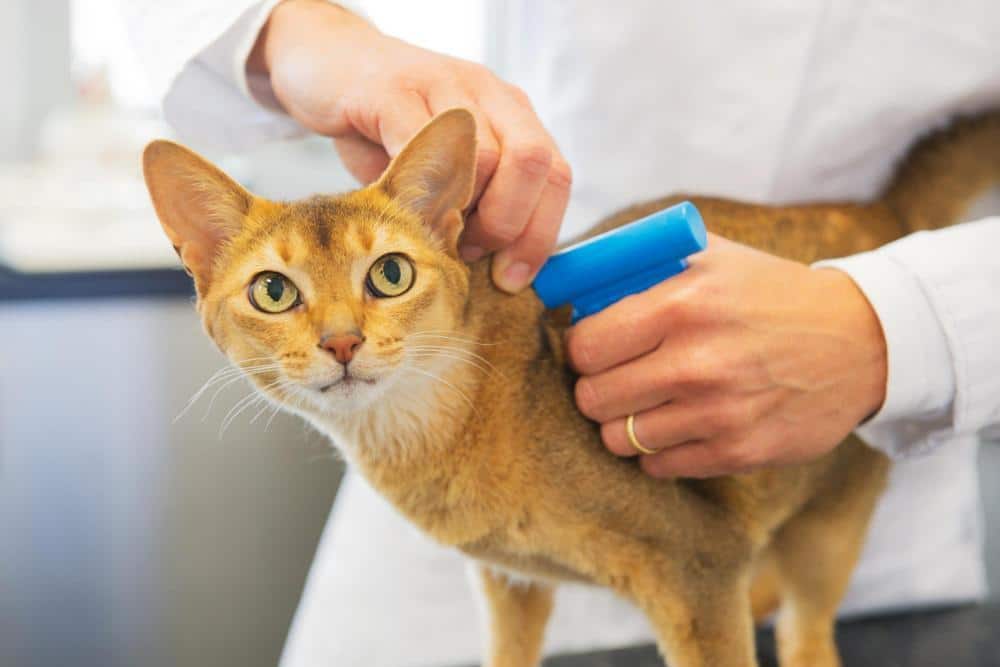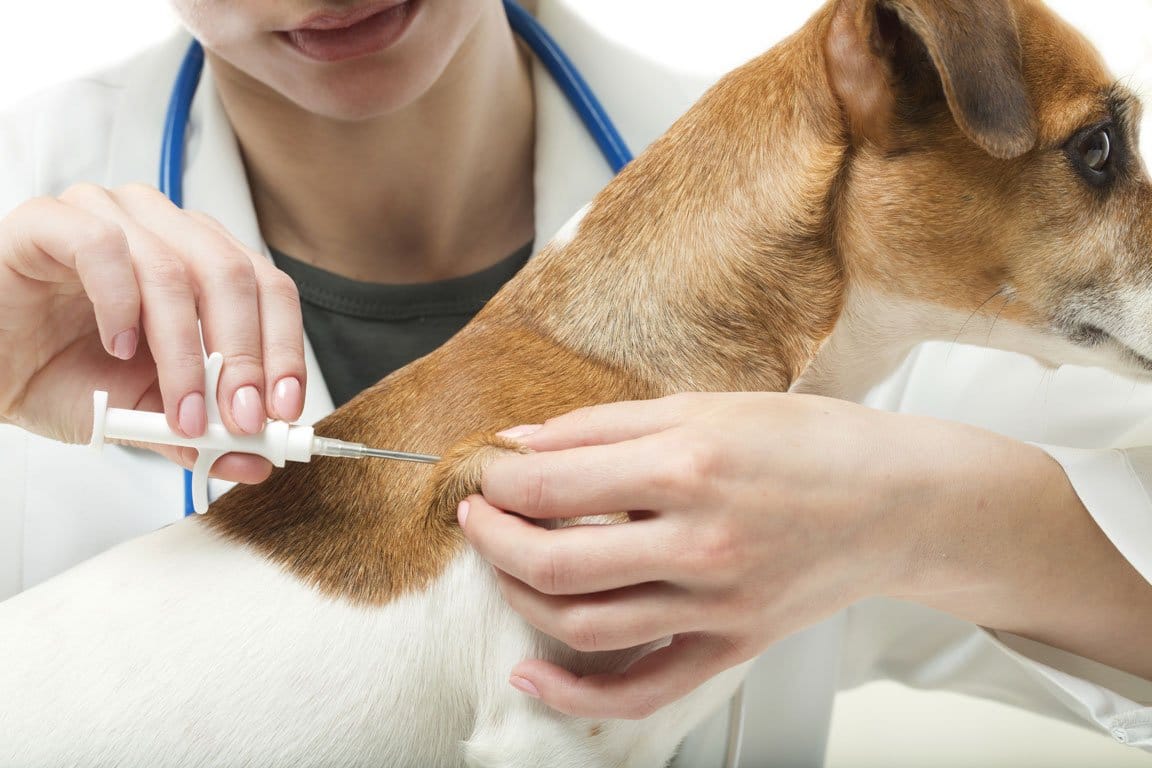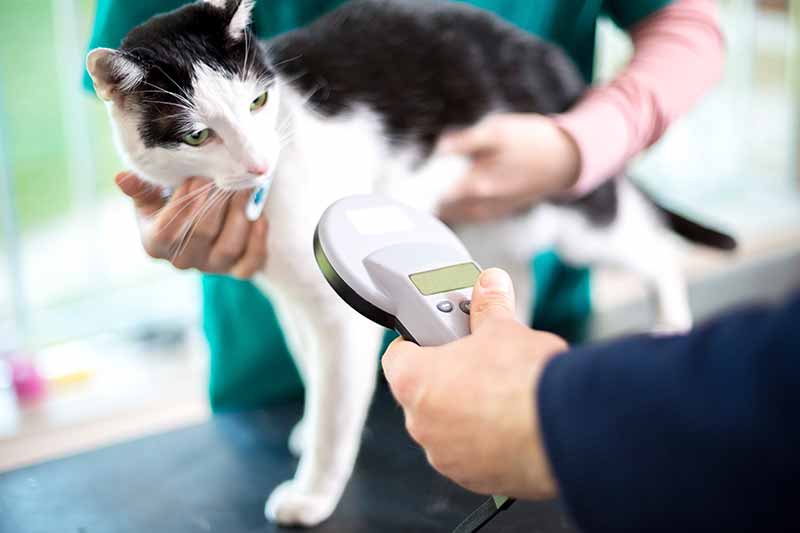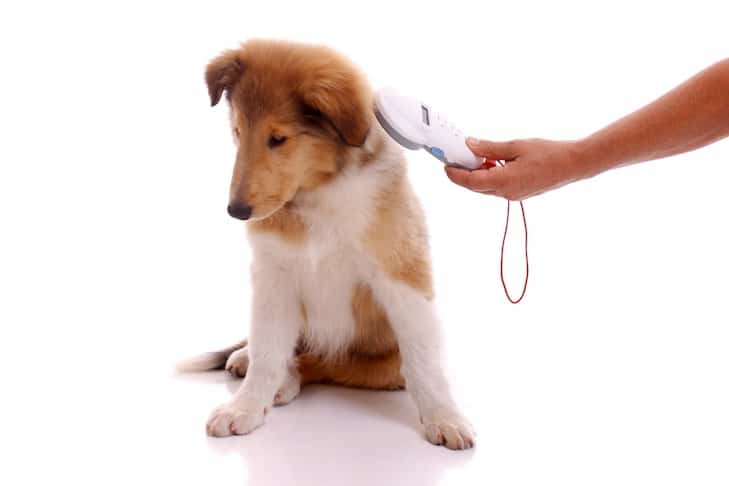Microchipping your pet
Brownsville Spay Neuter has microchipped more than 30,000 dogs and cats.
Microchipping is fast, painless, and extremely effective in identifying and returning pets to their loved ones.
Getting your pet microchipped is similar to a routine vaccination. In a few quick seconds your veterinarian can give your pet a permanent ID.
About the Microchipping Procedure Dog and cat microchipping is a simple procedure. A veterinarian simply injects a microchip for pets, about the size of a grain of rice (12mm), beneath the surface of your pet’s skin between the shoulder blades. The process is similar to an injection and takes only a few seconds. No anesthetic is required.
A microchip is a small, electronic chip enclosed in a glass cylinder that is about the same size as a grain of rice. The microchip itself does not have a battery—it is activated by a scanner that is passed over the area, and the radio waves put out by the scanner activate the chip. The chip transmits the identification number to the scanner, which displays the number on the screen.
Have your pet microchipped with Brownsville Spay Neuter, and register your pet with Home Again
MICROCHIP: WHY & WHEN
The best reason to have your pets microchipped is the improved chance that you’ll get your pet back if it becomes lost or stolen.
Definitely! Dogs and cats with microchips are more than twice as likely to be returned to their owners, and microchipped cats are almost 20 times as likely to be reunited with their families. The most common reason microchips fail to reunite pets and families is incorrect owner information (or no owner information) in the microchip registry database – so don’t forget to register and keep your information updated. When your pet is microchipped, you’ll be provided with information on registering the microchip and updating your information.
It is injected under the skin using a hypodermic needle. It is no more painful than a typical injection, Once your pet is microchipped, there are only three things you need to do:
+ Make sure the microchip is registered
+ Ask your veterinarian to scan your pet’s microchip at least once per year to make sure the microchip is still functioning and can be detected
+ Keep your registration information up-to-date although the needle is slightly larger than those used for injection.
No surgery or anesthesia is required—a microchip can be implanted during a routine veterinary office visit. Microchips should be implanted under supervision by a veterinarian, because veterinarians know where the microchips should be placed, how to place them, and how to recognize the signs of a problem and treat one if it occurs.
There really is no maintenance required for microchips themselves, although you do need to register the microchip and keep your contact information up-to-date in the microchip registration database. If you notice any abnormalities at the site where the microchip was implanted, such as drainage (oozing) or swelling, contact your veterinarian. Ideally, the microchip should be scanned during your animal’s regular check-ups to make sure that it’s still in place and working properly.
Any database with which you register your pet’s microchip needs to be regularly updated, and the critical database to keep up-to-date is the one maintained by the microchip manufacturer. If you’ve moved, or if any of your information (especially your phone number) has changed, make sure you update your microchip registration in the manufacturer’s database as soon as possible
Microchips are great for permanent identification that is tamper-proof, but nothing replaces a collar with up-to-date identification tags when it comes to quickly identifying a found pet. But if a pet is not wearing a collar and tags, or if the collar is lost or removed, then the presence of a microchip might be the only way the pet’s owner can be found.
The microchips presently used in pets only contain identification numbers. The microchip is not a GPS device and cannot track your animal if it gets lost.
Although the present technology microchip itself does not contain your pet’s medical information, some microchip registration databases will allow you to store that information in the database for quick reference.
Millions of animals have been microchipped, and reported problems are few. Of these reactions, movement of the microchip from its original implantation site is the most common problem reported. Other problems, (failure of the microchip, hair loss, infection, swelling, and tumor formation) were reported in much lower numbers. With these infrequent problems, the benefits of microchipping animals definitely outweigh the risks.
Subscribe to our newsletter
We send e-mails once a month, we never send Spam!






